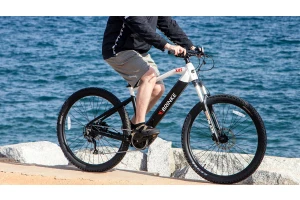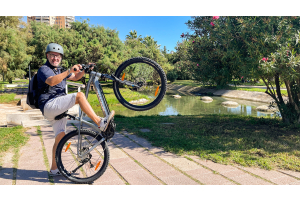August 13, 2024

Things You Need to Know About Cycling (6) - Basic Maintenance
Learning some basic maintenance not only makes your journeys more enjoyable but also saves you a considerable amount of unnecessary costs. Let's take a look at the following tips.
Drivetrain Maintenance The primary aspect is lubrication. The most effective method is to apply lubricant oil. It's essential to keep the chain well-lubricated and responsive, particularly after riding through water or rain. Additionally, oil the moving parts of the front and rear derailleurs. Ideally, use a bicycle-specific rust-preventive lubricant, though regular motor oil can be used, albeit less effective.


Brake System Maintenance The braking system is crucial for your safety, so it requires special attention. Ensure all moving parts function smoothly and reliably, and regularly check the brake pad spacing and wear. The spacing should be consistently maintained at 2-3 millimeters on both sides. If the gap is too wide, the brake pads will have a longer travel distance, reducing braking sensitivity. If the gap is too narrow, it could cause brake drag, increasing riding effort and energy use. Brake pads with grooves must be replaced when these grooves wear down to maintain braking efficiency and safety.
Axle Maintenance There are several types of axles, including standard axles, sealed axles, and bearing axles. Regardless of the type, regular maintenance is essential. This should be done every 5,000 kilometers or annually, whichever comes first, involving a thorough greasing. Simultaneously, inspect the bearings and axle components for wear and replace them as needed. Avoid using motor oil for axle lubrication.
Brake and Gear Cable Maintenance Brake and gear cables are usually housed in casings that can accumulate dust and moisture, especially in rainy conditions. This can lead to rusting. Periodically remove the cables, apply a layer of grease, and reassemble them. This should be done annually or every two years at most.
By following these maintenance tips, you can ensure a smoother, safer, and more economical cycling experience.


 Deutsch
Deutsch  Español
Español  Deutsch
Deutsch 



Validate your login